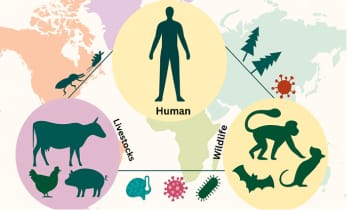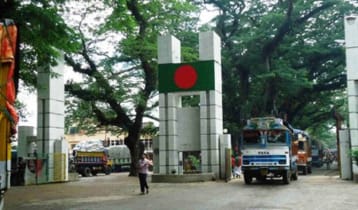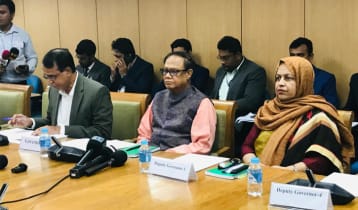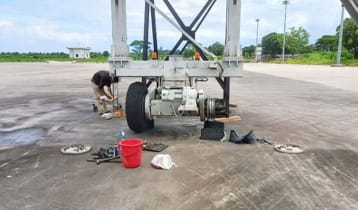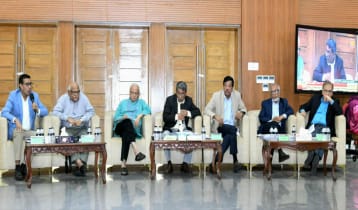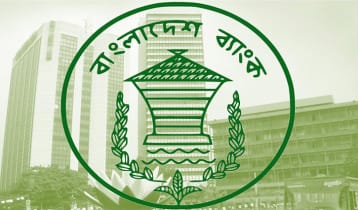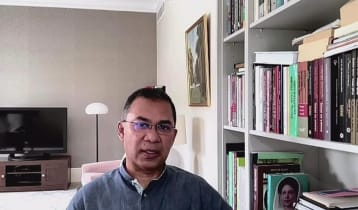Who are the real climate migrants?
Azad Majumder || risingbd.com
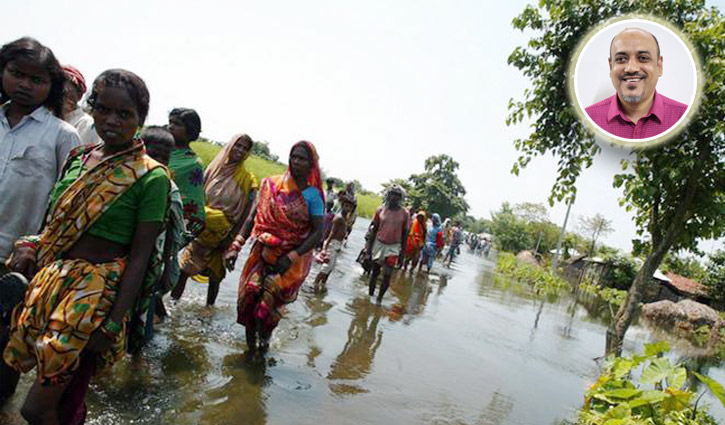
Azad Majumder
Two years ago, I visited the only shelter meant for climate migrants in Dhaka. Dhaka South City Corporation built the sprawling shelter in the Sadarghat area on the bank of the river Buriganga. The shelter has excellent amenities. It is the ideal place to reside for anyone who has been displaced.
For any displaced person, it is a dream place to live. But those found a place in the shelter, there was every reason to doubt whether they were really displaced persons. Some of them were there, obviously. I found there, from footpath hawkers to floating sex workers, those who did not have a place to live in Dhaka for various reasons. It was difficult to instantly understand that one of those factors was climate change.
This time I visited Kalyanpur slum on a reporting duty. The goal was the same—finding the climate migrants. I had to be disappointed again. In the 17-acre slum, some 10,000 people live. Locally, it is known as Pora Slum. Since it was established in 1988, it has been subject to fire incidents six times. Slum dwellers do not believe they are all accidents. But that is a different discussion. Until recent fire incidents, the slum was known as Bhola Slum. The reason was simple. Most of its residents came from Bhola, and a large portion of them had been displaced by river erosion.
I had contacted some of them through an NGO that has an office in the slum. According to a survey by this NGO, at least 21 per cent of the residents of the slum are climate migrants. I spoke to at least 15 slum dwellers in the office. Interestingly, none of them were found to be directly affected by climate change. There was only one reason for them to choose the life of a slum over their own place, and that was river erosion, and that had happened few decades ago. I found none whose houses had been eroded into rivers in recent years. Maybe, the recent victims of river erosion are still busy trying to rebuild their lives near the river bank.
This is how the confusion comes. Are they among the people whom we consider climate migrants? Can we say the people displaced by river erosion are climate migrants? My doubts only grew after talking to Saleelmul Haq, who is considered a top climate expert. Saleemul Huq is a Bangladeshi-British scientist, a fellow of the Bangladesh Institute for Environment and Development, and the Director of the International Centre for Climate Change and Development. I asked him who the real climate migrant was. Those who we call climate migrants in Bangladesh, how many of them are climate migrants in the true sense? The summary of his replay is, there’s no climate migration in Bangladesh at the moment. Those who we now call climate migrants are mostly the victims of river erosion.
He, however, feared that a huge number of people would be displaced by climate-related factors in the near future. According to the World Bank, the number will be over 13 million in 2050. A good number of them will be forced to leave their homes due to a lack of pure drinking water. Permanent water stagnation in crop land will also force many people to take shelter elsewhere, leaving their houses. Because of the massive and devastation caused by Cyclone Aila, the number of these people is increasing at the moment. If the victims or river erosion are added to them, Bangladesh is already home to a large number of climate migrants.
This year, nearly four million people were directly affected by floods in the Sylhet region. Many of them had to rush for shelter. But most of them were able to return to their houses after the flood waters receded. Experts are reasonably unanimous in their opinion that climate change is mostly responsible for the sudden flood in Sylhet. The rain in India’s Cherapunji surpassed the record of several decades. There was heavy rain in many other upstream areas. As a direct consequence of that, the flood forced many people to rush for shelter. But it is yet to be known how many of them have become permanently displaced.
This is one of the reasons why many global organisations' accounts of climate migrants raise doubt. I have already said the account of climate migrants would change if we put river erosion victims in this bracket. Ian Fry, the UN Special Rapporteur on human rights and climate change, recently visited Bangladesh. I also asked him if we could call the river erosion victims climate migrants. Fry seems in favour of calling them climate migrants. Due to the effect of climate change, the frequency of floods, cyclones is increasing. Embankments in many areas are giving in to natural disasters, washing away the houses of many people. Some years later, only these displaced people are getting shelter in the city corporation’s climate migrant centre or Dhaka slums.
The writer is joint news editor at New Age and Bangladesh correspondent of Spanish news agency Agencia EFE
Dhaka/AI


